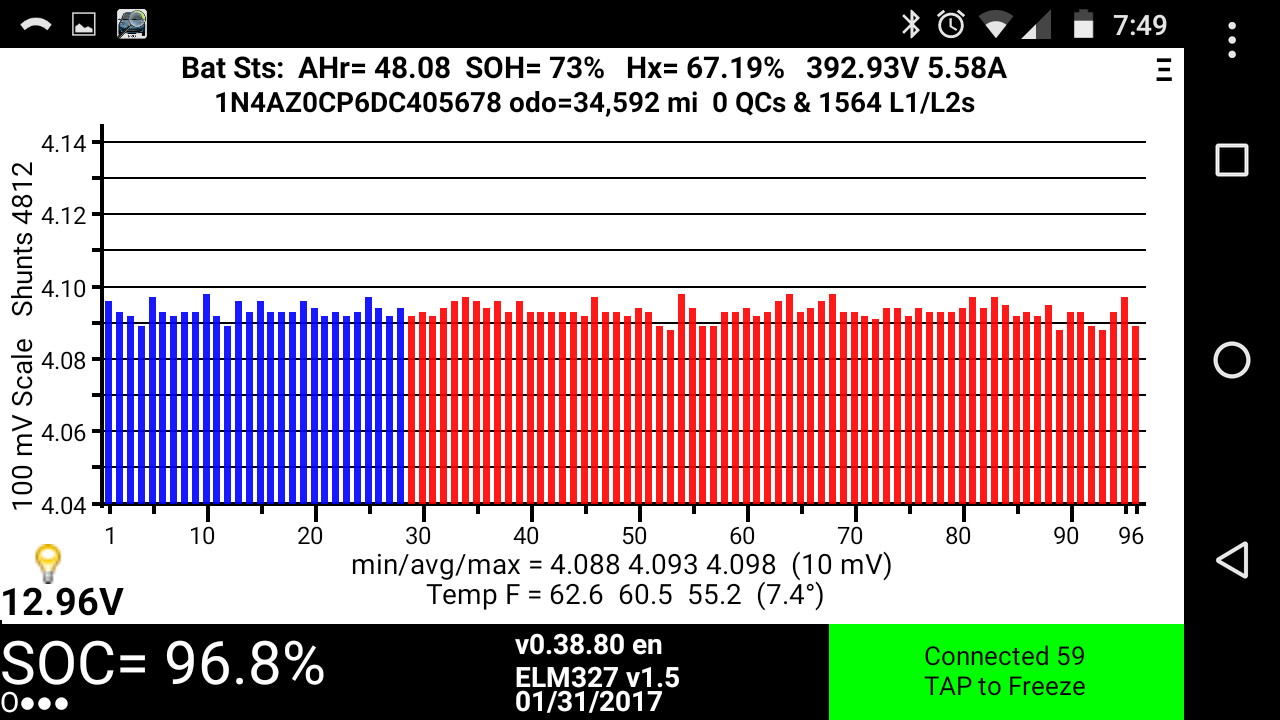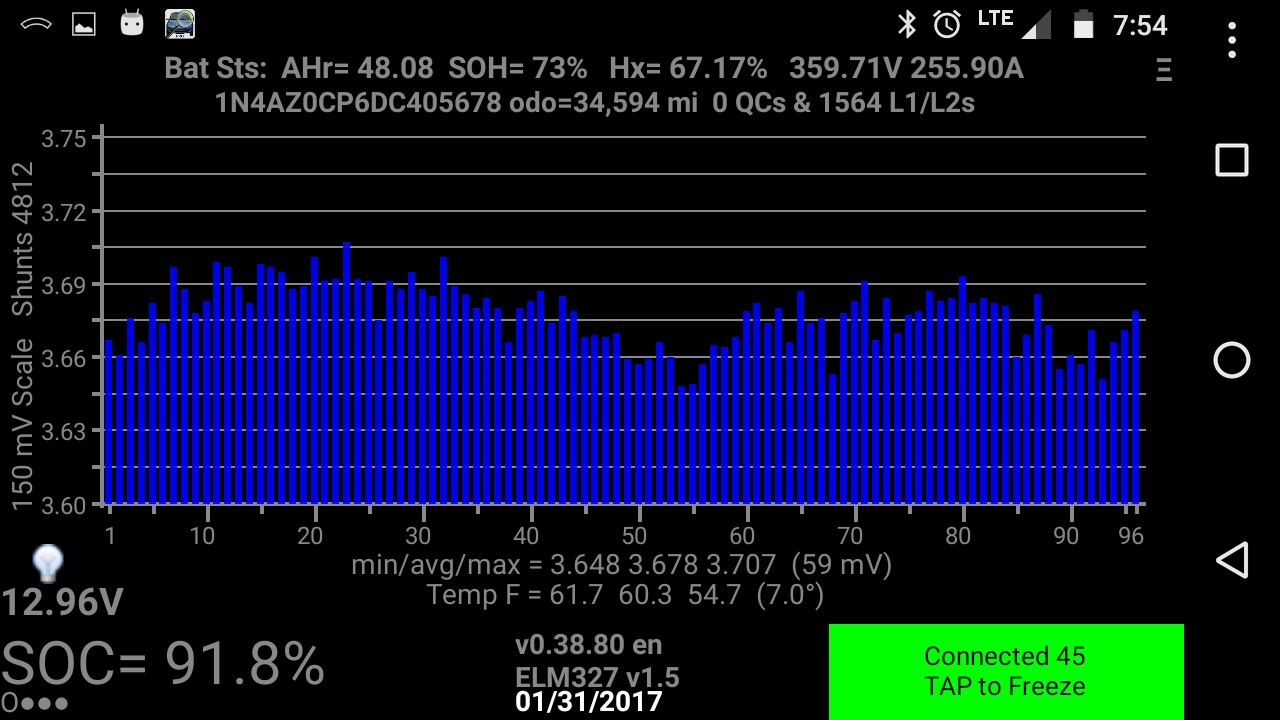chaz
Member
Hi all,
I am wondering if anyone has had a massive loss in SOC due to accelerating in cold weather.
Background:
My wife has a march 2013 leaf missing 3 bars. We bought in UT used in july. It was originally from southern CA.
We drove to dinner the other day and drew it down to about 80% SoC. The car sat at about 20 deg F for a few hours and then we went to go home. While hopping on the highway and getting up to 80 the SoC dropped to 22% and we freaked out and drove home in eco.
On the trip back the SoC slowly ramped up and we ended the night with a little more than 25%.
I looked up DTC with leaf spy pro and there were none recorded.
Anyone ever experience this? With no DTC codes recorded I am worried the battery is going to get flaky but the dealer won't be able to do anything to help. I am nearing the end with the battery lottery also, I would hate to not loose the last bar and be stuck with a flaky battery.
Thanks.
-Chaz
I am wondering if anyone has had a massive loss in SOC due to accelerating in cold weather.
Background:
My wife has a march 2013 leaf missing 3 bars. We bought in UT used in july. It was originally from southern CA.
We drove to dinner the other day and drew it down to about 80% SoC. The car sat at about 20 deg F for a few hours and then we went to go home. While hopping on the highway and getting up to 80 the SoC dropped to 22% and we freaked out and drove home in eco.
On the trip back the SoC slowly ramped up and we ended the night with a little more than 25%.
I looked up DTC with leaf spy pro and there were none recorded.
Anyone ever experience this? With no DTC codes recorded I am worried the battery is going to get flaky but the dealer won't be able to do anything to help. I am nearing the end with the battery lottery also, I would hate to not loose the last bar and be stuck with a flaky battery.
Thanks.
-Chaz






